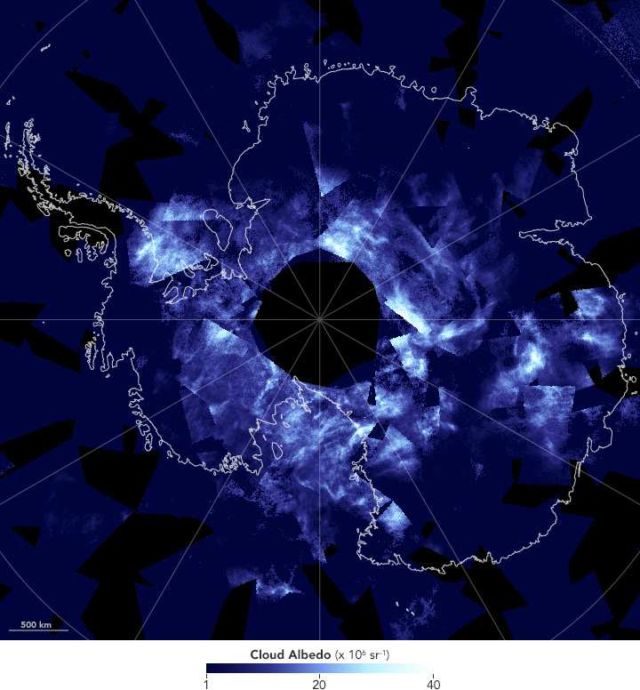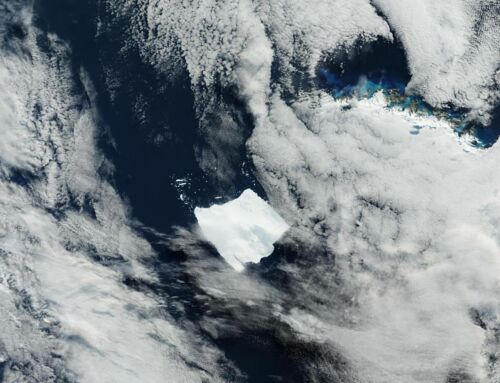Spectacular glow-in-the-dark Noctilucent clouds, 50 to 85 kilometers above the Earth’s surface, in frozen Antarctica.
Strictly speaking, noctilucent or “night shining” clouds don’t glow in the dark the way the bioluminescent algae or fireflies do. Also called polar mesospheric clouds, they float high enough in the atmosphere to capture a little bit of stray sunlight, even after the Sun has fallen below the horizon. In this way, they have more in common with an actor being illuminated by a spotlight in front of a dark curtain.
Noctilucent clouds commonly occur at high latitudes in the late spring and early summer, before 24-hour daylight sets in. They form around both the North and South Pole, roughly 50 to 85 kilometers (30 to 55 miles) above the Earth’s surface.
Cora Randall of the University of Colorado, said:
“The stratospheric winds in November-December are quite variable from year to year. This year they transitioned to their summer-like state early, leading to the early season onset.”
NASA Earth Observatory map by Jesee Allen, using preliminary Polar Mesospheric Cloud data from the University of Colorado Laboratory for Atmospheric and Space Physics. Caption by Pola Lem.
source earthobservatory






Leave A Comment